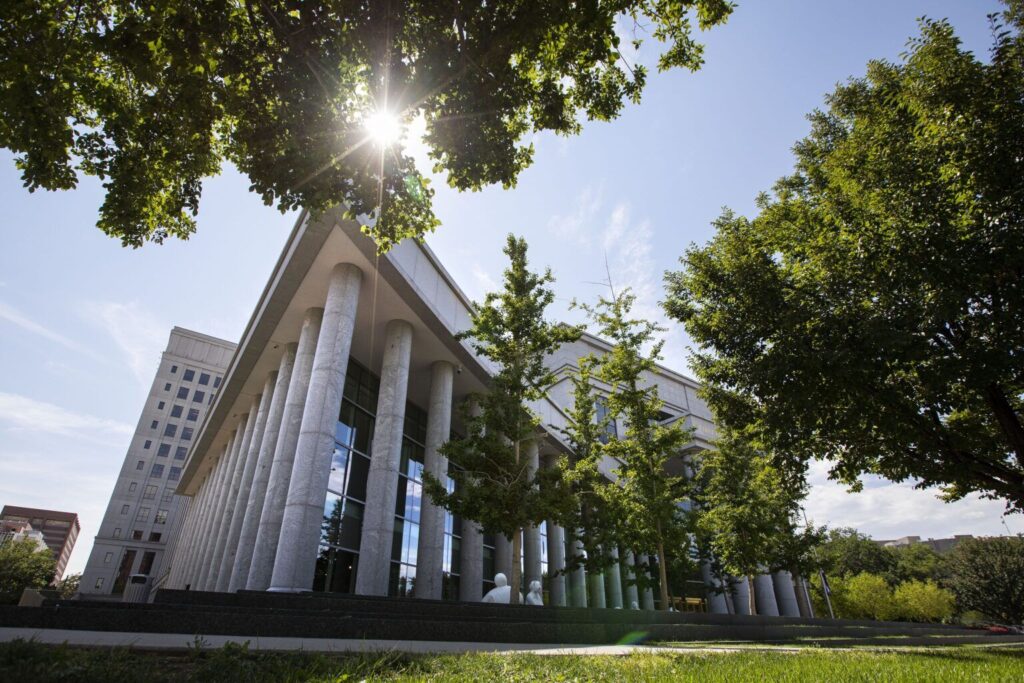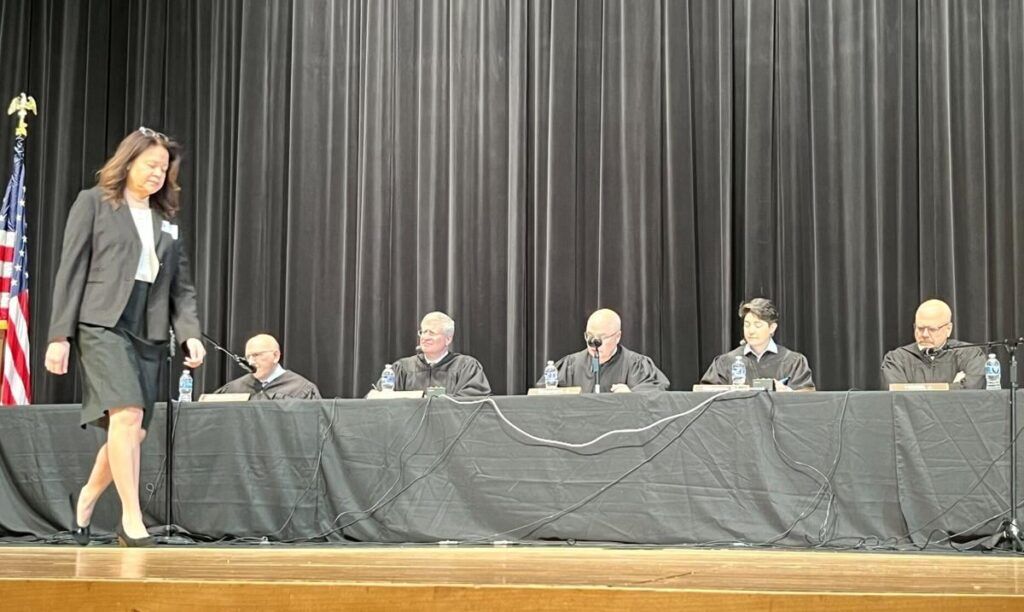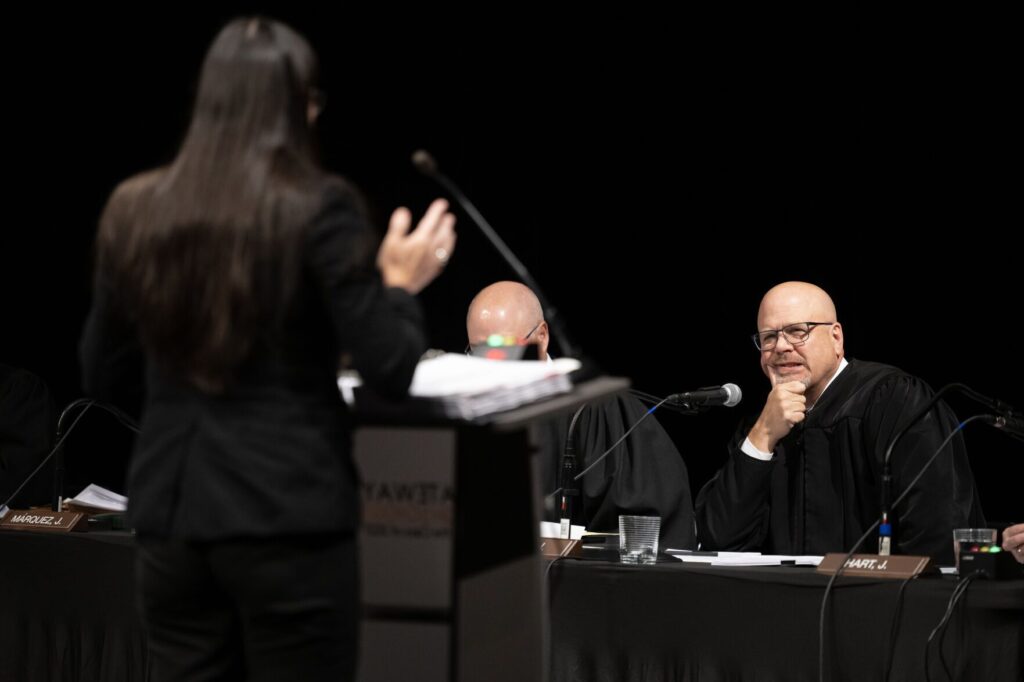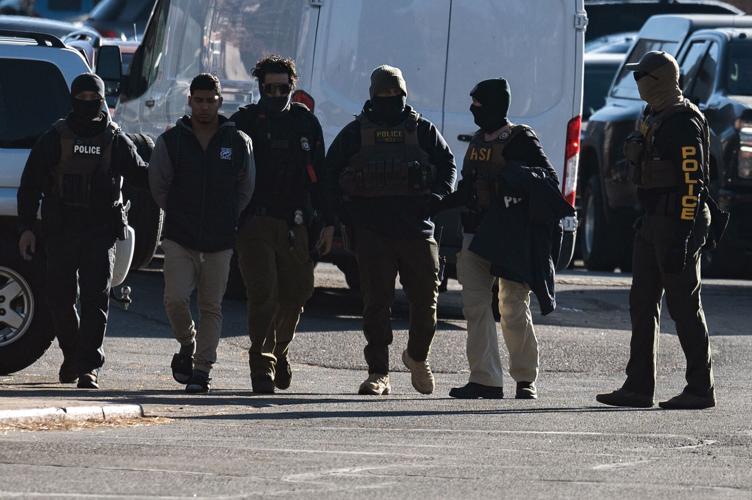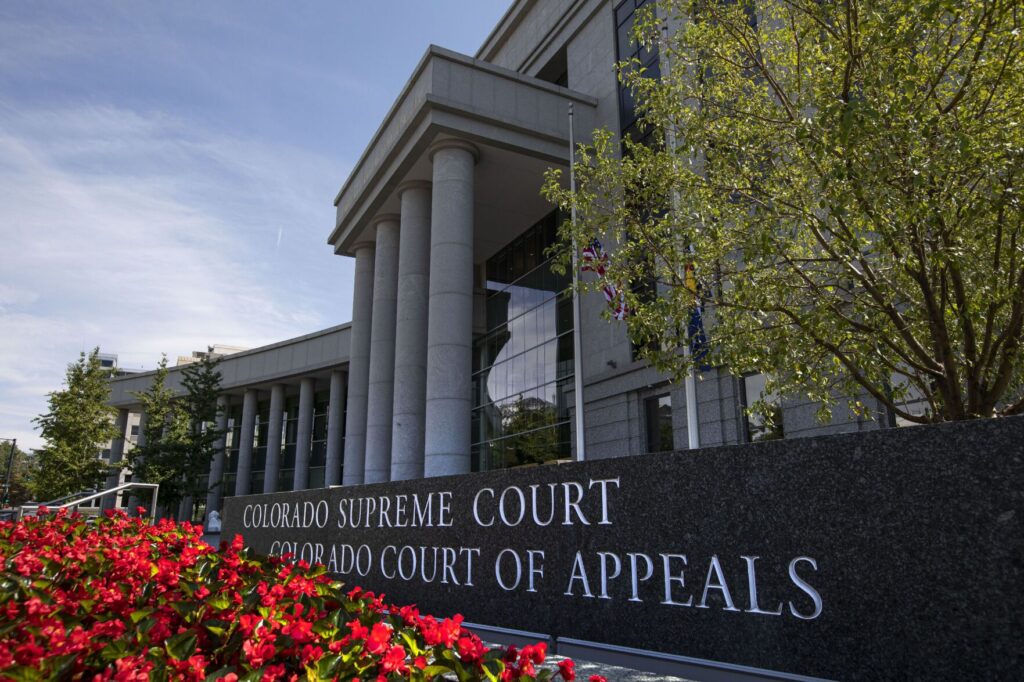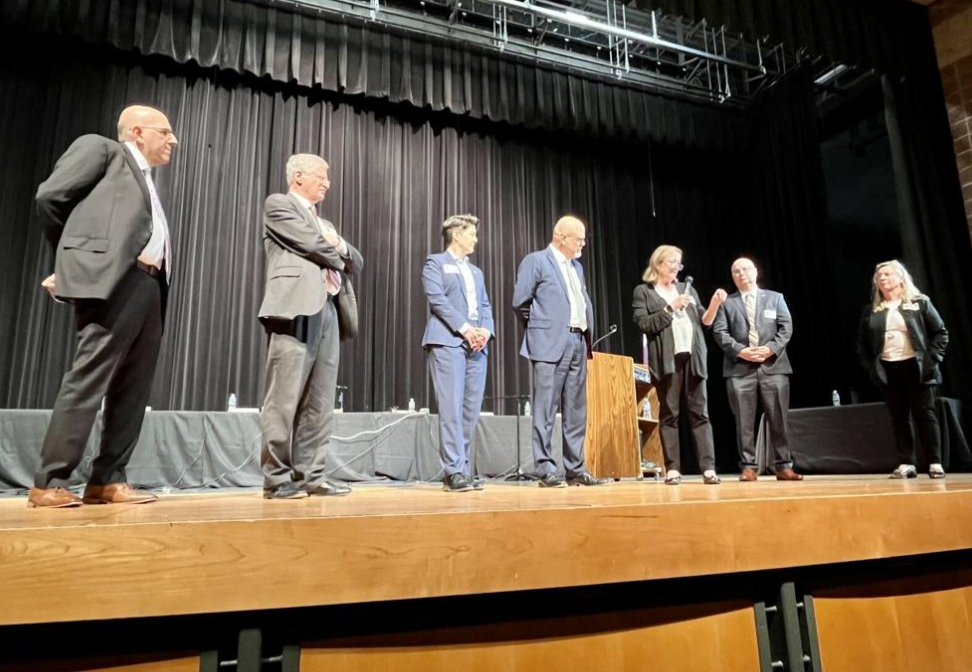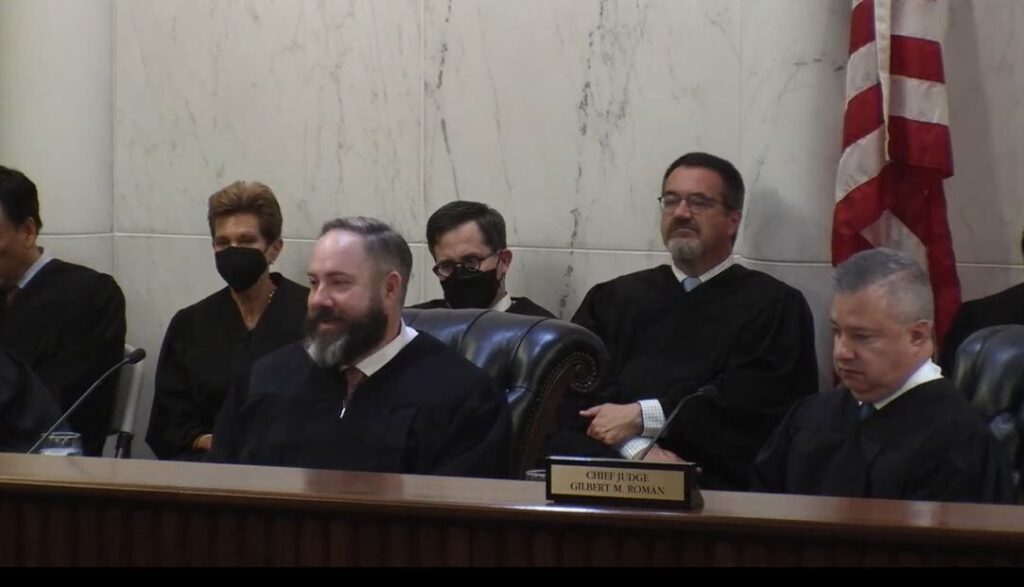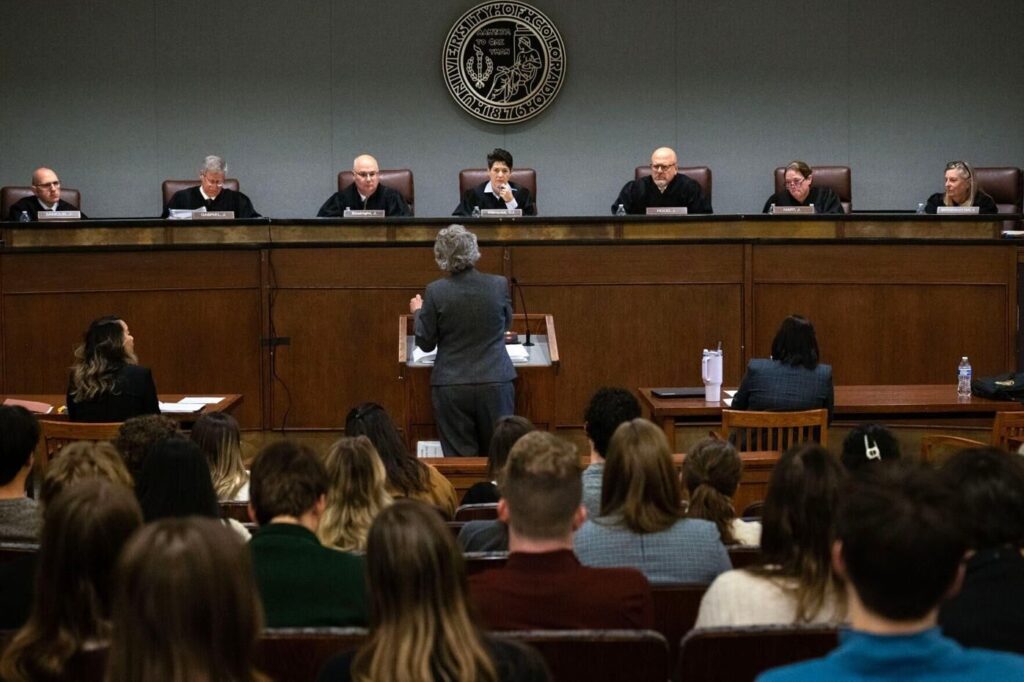Aurora police officer can be added to lawsuit over 2020 protests, judge rules
A federal judge has allowed a group suing Denver and Aurora police over the 2020 George Floyd protests to change their lawsuit to add one officer and drop another.
In the latest request, the protesters’ attorneys said they have received new body-worn camera footage that points to a different officer than the one previously accused to have shot one plaintiff, Tyson McCormick, in the head with a projectile.
But Judge Nina Wang noted the new filing will be the fourth version of the suit, and cited the need to keep the case moving. She warned the plaintiffs she won’t be inclined to allow them to amend the case yet again.
A group of 14 people brought excessive force claims against Denver, Aurora, retired Denver police Cmdr. Patrick Phelan and Aurora Police Officer Austin Runyon for police’s use of kinetic impact weapons and chemical irritants during the 2020 protests prompted because of George Floyd’s killing by Minneapolis police officers. The case, originally filed last May, claims officers violated protesters’ constitutional protections against excessive force and unreasonable seizures by using the weapons indiscriminately.
Phelan served as incident commander for the protests. Aurora police assisted Denver in their response.
Judge declines to throw out federal lawsuit over conduct of Denver police during 2020 protests
The case alleges that on May 31, 2020, McCormick was shot in the head by police projectile while he protested around Colfax Avenue and Washington Street in Denver. The attorneys now believe the projectile was a lead pellet-filled bag from a shotgun.
Earlier versions of the lawsuit named Aurora officer Runyon as the person who allegedly shot McCormick. McCormick based that claim on his initial belief he had been shot with a gas canister, suggesting Runyon shot him, and body-worn camera footage didn’t make it clear what McCormick was hit with. But McCormick now says he believes Officer Joshua Winters, also from Aurora, actually fired the projectile that hit him based on body-worn camera footage received last December. Winters also said during a February deposition he “deployed his weapon immediately in response to [an] alleged threat.”
The protesters asked for permission to file a new version of the lawsuit, after the deadline to do so, that names Winters and dismisses their claims against Runyon.
Aurora objected to the filing of an amended case. Their attorneys countered that the protesters have had all the necessary information to make their claim against Winters since well before the deadline to change their lawsuit.
The information, they said, includes a roster identifying Runyon and Winters as part of the same squad on May 31, and also identifies Winters as the designated operator of 12-guage shotguns for the squad. The Aurora defendants said the protesters have also had an annotated map identifying both officers’ positions.
Their attorneys also said the Aurora defendants turned over video covering the time and location of the incident involving McCormick in the initial batch of evidence they produced, much earlier than last December.
“Taking all of this into consideration, the Aurora Defendants conclude that ‘Plaintiffs possessed all the facts necessary to assert the claims in the (proposed third amended complaint) well in advance of the deadline for amending the complaint,'” Wang wrote.
Man names eight Denver police officers in lawsuit over 2020 George Floyd protests
But she said that based on her review of evidence, video the Aurora defendants said they produced initially doesn’t definitively show that Winters shot McCormick, and a clip from Runyon’s camera is either obstructed by his hands or mainly pointed at another officer’s back at various points. The Aurora defendants haven’t clarified where McCormick is shown in the clip, Wang wrote.
“The mere fact that ‘plaintiffs were aware of Officer Winters'[s] identity at the inception of this matter as they disclosed Officer Winters as an individual with discoverable information’ does not amount to an awareness that plaintiffs knew of the nature or extent of Officer Winters’s alleged involvement in this case” before receiving other body-worn camera footage and the officers’ depositions that clarified Winters’ role, Wang added.
She decided McCormick’s attorneys showed good cause to amend the case after the deadline to do so because they discovered new information, and they moved diligently to change their complaint after the discoveries.
But in granting the latest request to amend the lawsuit, she wrote: “The Court is cognizant, however, that this is the second time that Plaintiffs have sought and been granted leave of Court to amend their pleading, and Plaintiffs’ new pleading will be their fourth iteration of their operative pleading. … Accordingly, Plaintiffs are expressly advised that the Court is not inclined to grant any other motions to amend their pleadings absent a showing of extraordinary circumstances necessitating any requested amendment.”


